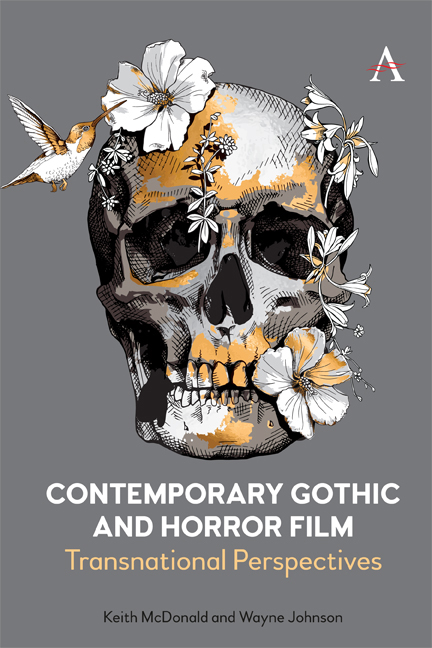Book contents
- Frontmatter
- Dedication
- Contents
- Acknowledgements
- Introduction
- 1 The Gothic Tradition Illuminated on Screen
- 2 Grief Encounters: Ghost Narratives
- 3 Folk in Hell: Rurality in Transition
- 4 Vampire Gothic as Post-Exotic Gloom
- 5 Shock and Awe: Cosmic Horror as Existential Crisis
- 6 De-Composmolitanism: Zombie Horror as Apocalypse
- Coda
- Bibliography
- Index
3 - Folk in Hell: Rurality in Transition
Published online by Cambridge University Press: 04 June 2021
- Frontmatter
- Dedication
- Contents
- Acknowledgements
- Introduction
- 1 The Gothic Tradition Illuminated on Screen
- 2 Grief Encounters: Ghost Narratives
- 3 Folk in Hell: Rurality in Transition
- 4 Vampire Gothic as Post-Exotic Gloom
- 5 Shock and Awe: Cosmic Horror as Existential Crisis
- 6 De-Composmolitanism: Zombie Horror as Apocalypse
- Coda
- Bibliography
- Index
Summary
Within the other-worldly realms of rural rituals, sacrifice and superstitions, folk horror has been resplendent in recent years in various films, TV series, folk song and literature as well as across transnational and transatlantic borders. And yet, folk horror is often a flimsy and unsatisfactory moniker for such a broad range of cultural artefacts, including the unholy film trinity of Witchfinder General (1968), The Blood on Satan's Claw (1971) and The Wicker Man (1973). And yet there is also the Italian film Il Demonio (1963), the Russian film Viy (1967), the Japanese film Onibaba (1964), the Czechoslovakian film and Witchhammer (1970), and the Australian film Walkabout (1971): all attest to a transnational range of coverage for folk horror. It is also mirrored across the Atlantic in the backwoods horror of films such as Deliverance (1972), Crowhaven Farm (1970), The Dark Secret of Harvest Home (1978) and, of course, The Texas Chainsaw Massacre (1974). At the heart of these folk exploitation films, though, is an obsession with the rural landscape (and in sharp contrast on occasion, urban settings, as is the case with Rosemary's Baby (1968)), a conniving suspicion of the outsider and an isolated community more often than not engaged in a summoning for ritual sacrifice. This particular strand of folk horror stands in stark contrast to the so-called bucolic Gothic described by Stephen Prince, Mark Fisher and others, which infers a far more pastoral and idyllic sense of rural living, simply coated in a little threat. In folk horror, however, the very soil seems malevolent, haunted, possessed by time and ancestral curses. Of course, these shifting definitions within and outside horror subgenres allow for a certain freedom, but folk horror is certainly defined by pre-Christian paganism, with its focus on rituals and sacrifice. The influences of M. R. James, Arthur Machen, H. P. Lovecraft, Robert Aikman and Alan Garner, among many others in foregrounding the ‘unknown’ in the natural world are obvious, which in turn is a slight departing from the Gothic focus on the ‘explained’ supernatural.
- Type
- Chapter
- Information
- Contemporary Gothic and Horror FilmTransnational Perspectives, pp. 57 - 80Publisher: Anthem PressPrint publication year: 2021



